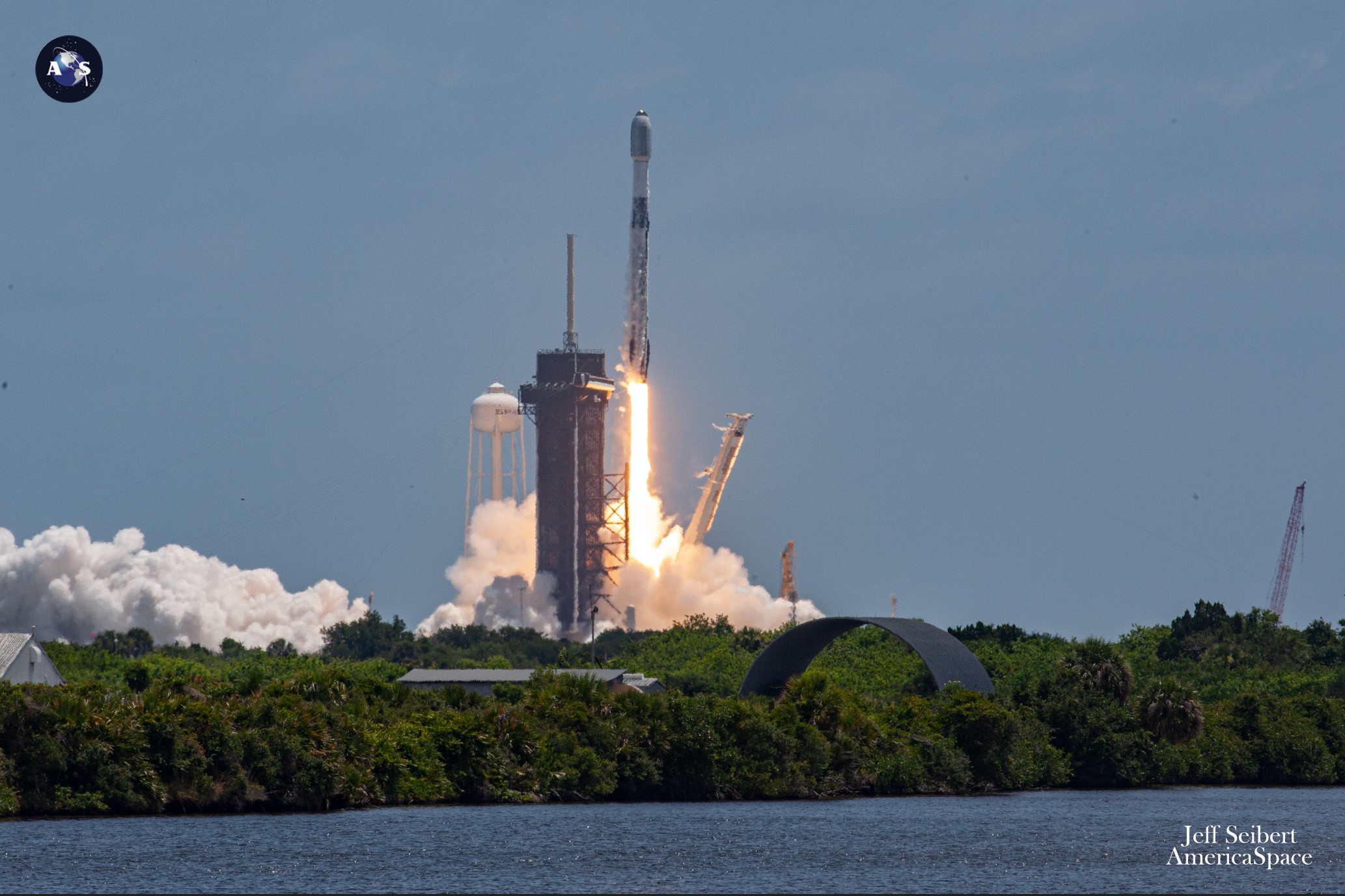
It may be Friday, but we should perhaps be relieved that it is not Friday 13th, for SpaceX—as if to tempt the gods of triskaidekaphobia—has successfully launched a Falcon 9 booster for the record-setting 13th time. Veteran core B1060 roared aloft from historic Pad 39A at the Kennedy Space Center (KSC) in Florida at 12:09 p.m. EDT, lifting 53 Starlink internet communications satellites smoothly into low-Earth orbit. Her job done, B1060 twirled and pirouetted her way back to a smooth touchdown on the deck of the Autonomous Spaceport Drone Ship (ASDS), “A Shortfall of Gravitas”, wrapping up SpaceX’s 100th mission with a flight-proven orbital-class booster. Attention now turns to Vandenberg Space Force Base, Calif., where another Falcon 9 stands poised to deliver Germany’s SARah-1 radar-imaging surveillance satellite into orbit no sooner than 7:19 a.m. PDT Saturday.
Flying today’s mission was none other than B1060, the first Falcon 9 core to log a 13th mission. First flown back on 30 June 2020 to deliver the third Block III Global Positioning System (GPS) navigation and timing satellite to Medium Earth Orbit (MEO) for the U.S. Space Force, she went on to support nine dedicated Starlink missions between September 2020 and last April, heaving a grand total of 500 of these flat-packed internet communications satellites into orbit.
She also launched Turkey’s powerful Türksat 5A geostationary communications satellite in January 2021 and the 88-payload Transporter-2 rideshare mission the following June. Less than two years since her maiden flight, B1060 has lifted an estimated 361,000 pounds (164,000 kilograms) of payload off the planet.
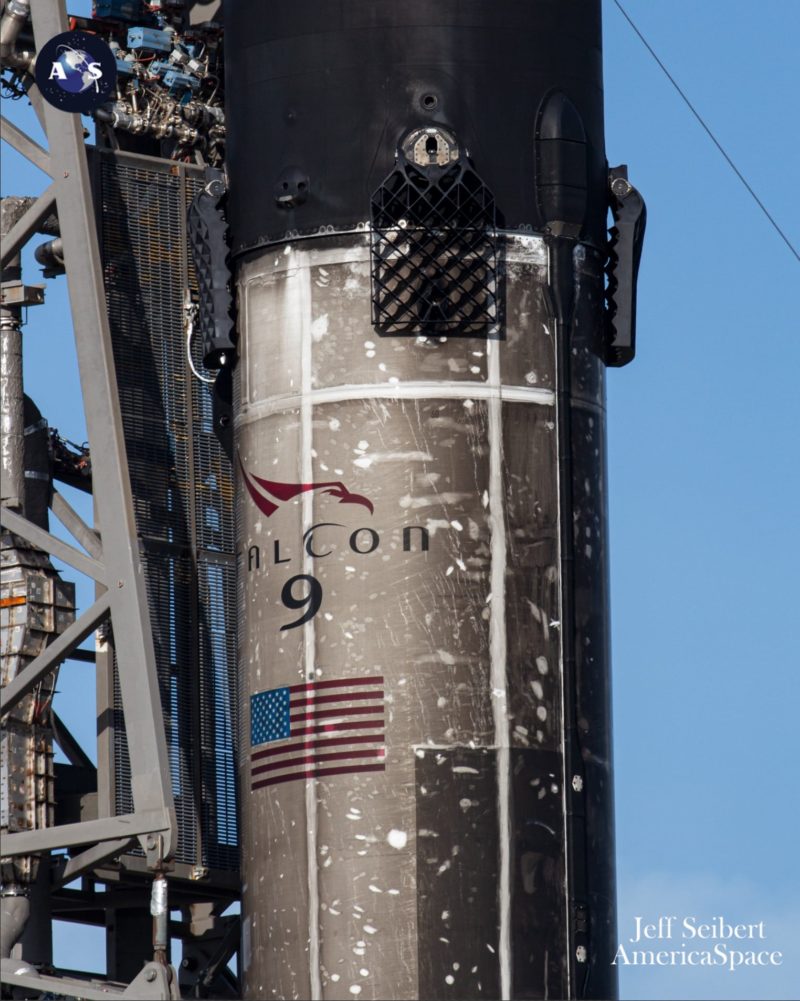
Her career has seen her land 12 times on the deck of an ASDS and once on solid ground at Landing Zone (LZ)-1 at the Cape. She was 2021’s most frequent flyer for SpaceX, logging six launches, more than any other Falcon 9 in a single calendar year. And early in 2021, she set a new record—now broken—for the shortest interval between launches by the same orbital-class booster.
Weather for Friday’s opening launch attempt proved highly favorable, with an 80-percent probability of acceptable conditions at T-0, tempered by a slight risk of violating the Cumulus Cloud Rule. With lower-than-normal rain chances and near-record heat, SpaceX readied for a weekend which could see three launches: today’s Starlink, tomorrow’s flight of SARah-1 out of Vandenberg and a third just past midnight on Sunday morning from Cape Canaveral Space Force Station, Fla., laden with a Globalstar-2 global mobile communications satellite and a secretive payload for an undisclosed U.S. Government customer.
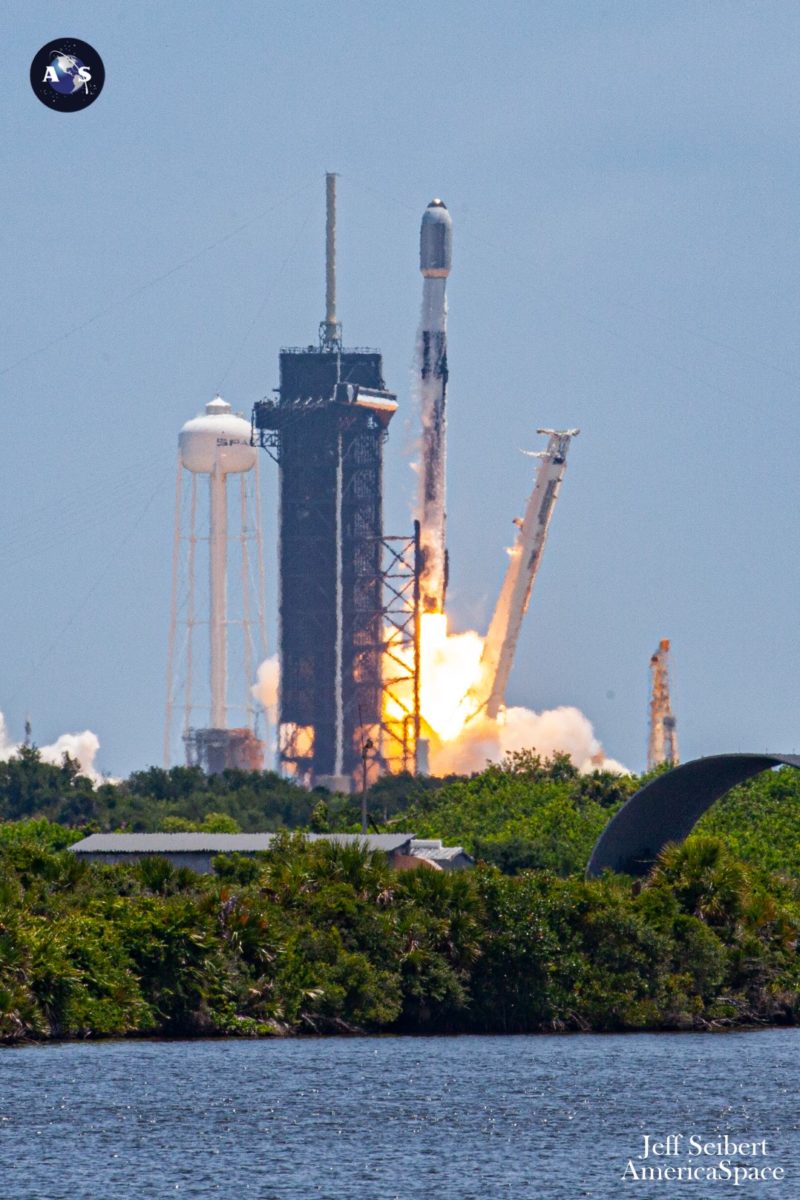
Friday’s launch was slipped by a minute from its advertised 12:08 p.m. EDT launch time, and B1060 powered smoothly uphill at 12:09 p.m. EDT, her nine Merlin 1D+ engines providing 1.5 million pounds (680,000 kilograms) of thrust. It marked the 100th occasion since March 2017 that a previously-flown Falcon 9 core has been turned around and launched again.
That figure includes two Falcon Heavy missions in February 2018 and June 2019, whose side-boosters had flown before. In joint second place behind B1060 are her sisters B1051 and B1058—the latter of which first saw service to launch May 2020’s historic Demo-2 mission with NASA astronauts Doug Hurley and Bob Behnken—which have each chalked up 12 flights.
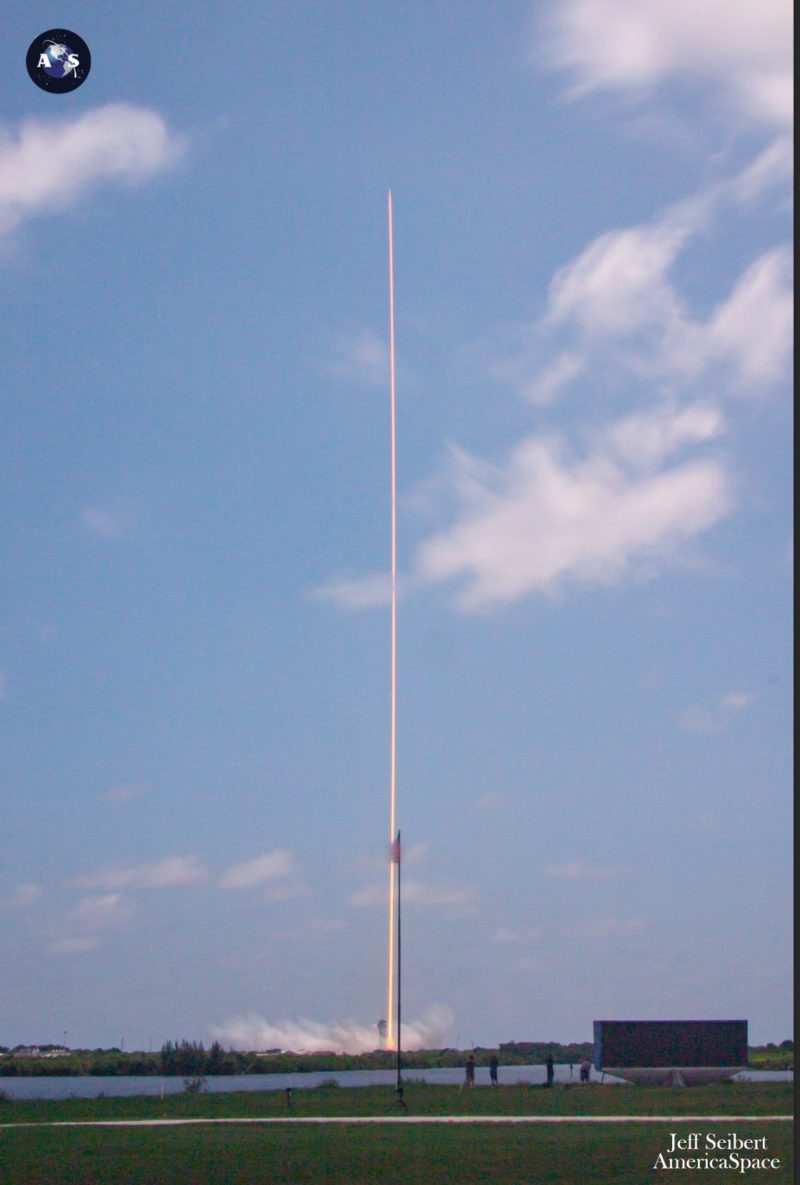
Eight minutes after launch, looking in surprisingly good condition for a vehicle with 13 launches, 13 re-entries and now 13 on-point touchdowns under its belt, B1060 landed safely on the deck of ASOG, wrapping up SpaceX’s 24th overall mission in the first 24 weeks of this year. Meanwhile, the Merlin 1D+ Vacuum engine of the Falcon 9’s second stage powered on, a six-minute “burn” delivering the 53 Starlinks toward their operational location at an altitude of 340 miles (550 kilometers), inclined 53.2 degrees to the equator. This pushes the number of Starlinks launched in 2022 to more than 760.
But with two more Falcon 9s gearing up for their own launches from the West Coast on Saturday morning and the East Coast just after midnight on Sunday morning, there is no hiatus in an aggressive schedule. The veteran B1071 core—a dedicated “Vandenberg Falcon”, making her third flight, having previously lofted the classified NROL-87 and NROL-85 payloads for the National Reconnaissance Office in February and April—will fly at 7:19 a.m. PDT Saturday from Space Launch Complex (SLC)-4E at the West Coast launch site. It is anticipated that B1071 will perform a Return to Launch Site (RTLS) maneuver and touch down on Vandenberg’s Landing Zone (LZ)-4.
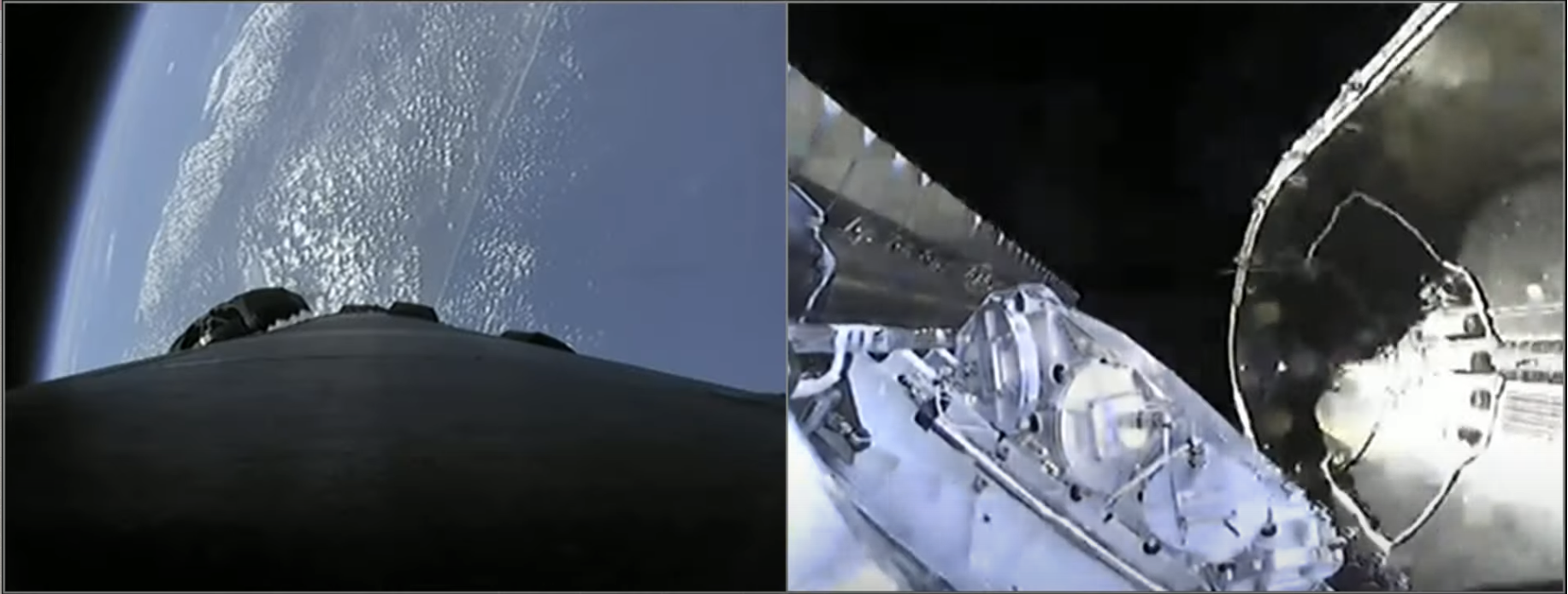
Aboard this mission is Germany’s SARah-1 radar-imaging surveillance satellite, equipped with a powerful phased-array Synthetic Aperture Radar (SAR). Weighing around 4,000 pounds (8,900 kilograms), it will be delivered to an operational altitude of 465 miles (750 kilometers), where it will be joined by two “passive” SARah reflector satellites later this year or perhaps early in 2023.
Contracts for the development of three SARah satellites, supported by a pair of ground stations, were awarded by the German Government to the Bremen-based OHB technology corporation in July 2013, valued at 816 million euros ($850 million). It represents a follow-on program from Germany’s five-satellite SAR-Lupe surveillance network, launched from Russia’s Plesetsk Cosmodrome between December 2006 and July 2008. OHB has primary responsibility for supplying the two passive SARah reflector satellites, whilst EADS Astrium—now part of Airbus Defence and Space—provides the “active” phased-array SARah-1 satellite.
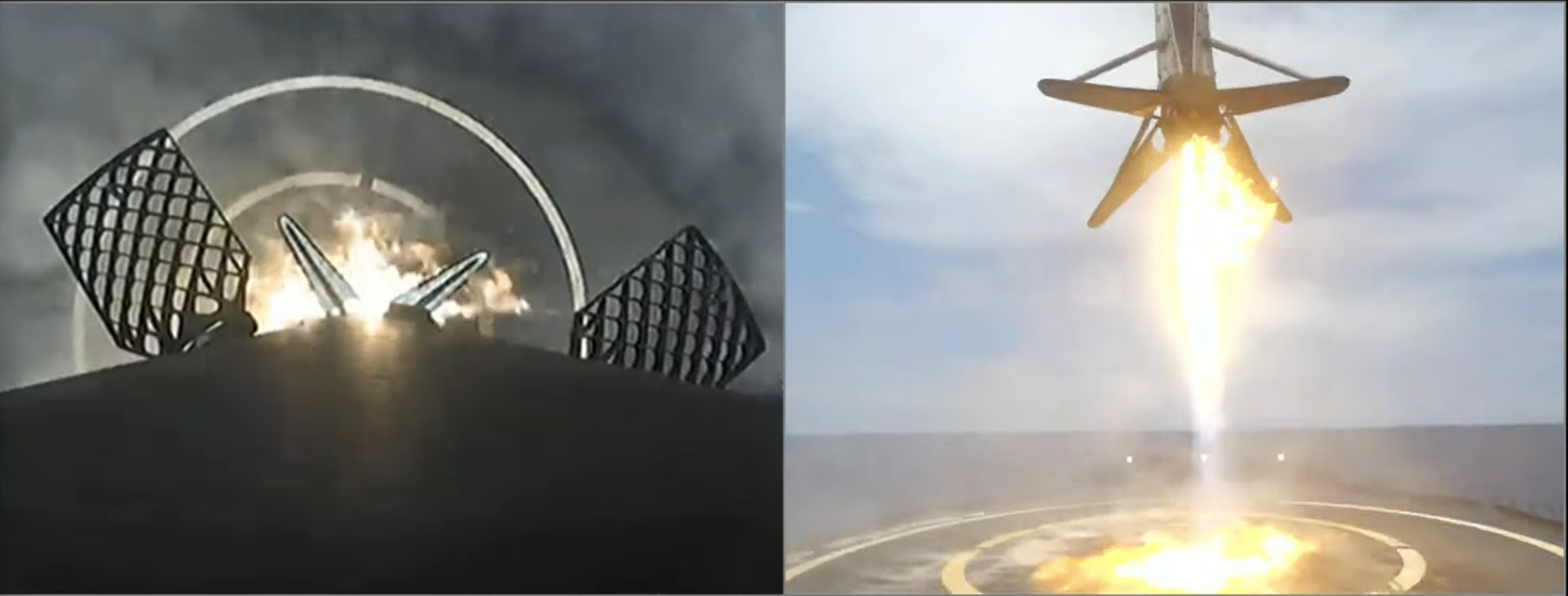
“By linking these two radar technologies,” OHB noted in a news release, “it will be possible to substantially enhance the efficiency of the overall system.” Airbus added that the dual usage of passive and active antenna technologies by SARah will permit observations “regardless of the time of day or weather conditions”. It was added that the phased-array technology furnishes the advantages of very fast pointing and very flexible shaping of the antenna beam to delivery imagery in record time.
Original plans called for the SARah ground segment to be ready for operation by fall 2016 and for the system itself to be launched and ready for full operations by 2019, but the program has slipped inexorably to the right. Earlier this week, Airbus announced that SARah-1 had been transported from Friedrichshafen, Germany, to Vandenberg for pre-launch preparations. After SARah-1’s launch, the Friedrichshafen site will oversee the Launch and Early Orbit Phase (LEOP) as the satellite is commissioned into service.
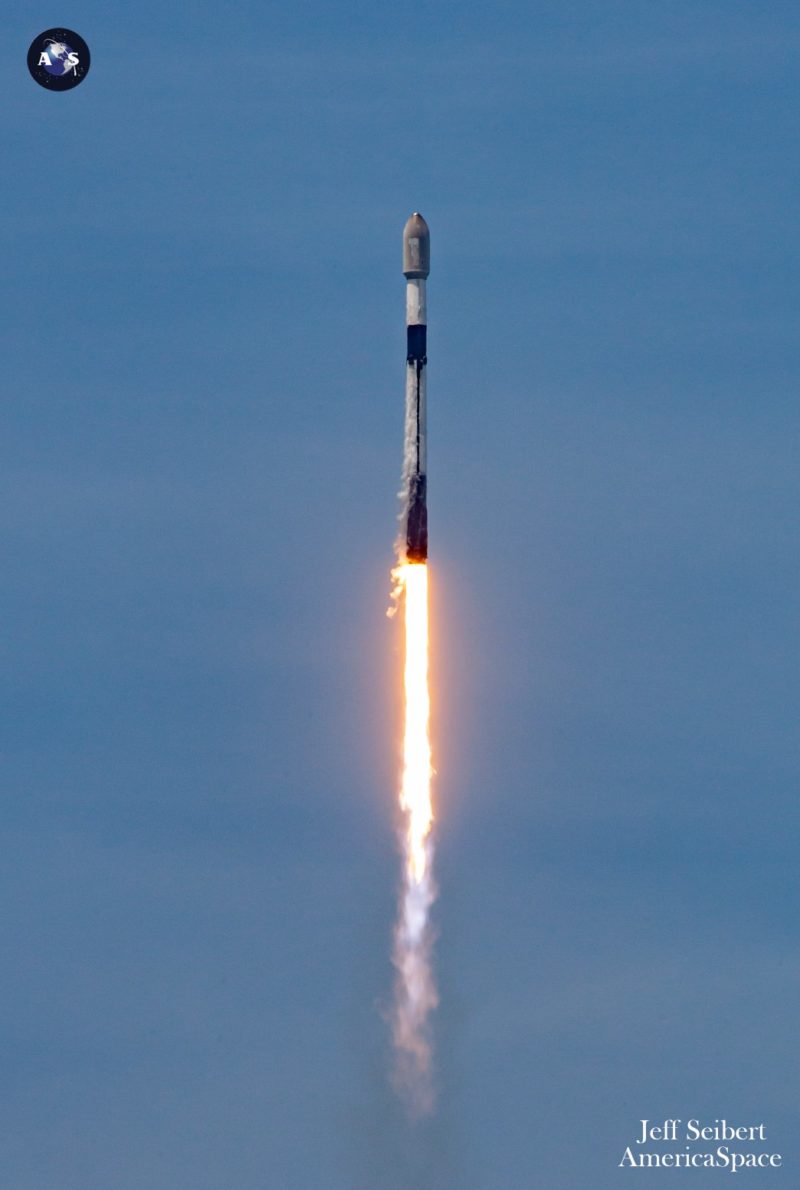
Attention will then turn to Space Launch Complex (SLC)-40 at Cape Canaveral Space Force Station, Fla., where the nine-times-flown B1061 core—last used less than a month ago—is set to lift a 1,500-pound (700-kilogram) Globalstar-2 global mobile communications satellite and a classified payload for an undisclosed U.S. Government customer at about 12:30 a.m. EDT Sunday. Weather conditions for the primary launch attempt on Sunday morning and a backup opportunity on Monday morning hover around 70-percent favorable, according to the 45th Weather Squadron at Patrick Space Force Base.
“Showers and thunderstorms will be back into the forecast for Saturday through Monday,” it was noted in a Friday morning update. “However, the late-night timing of the primary and backup launch windows will do us some favors, as most of the thunderstorm activity should be over with, leaving nocturnal cloud cover in its wake.” As a result, the principal issues are potential violations of the Cumulus Cloud Rule and Surface Electric Field Rule.





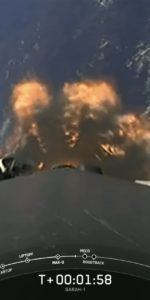
9 Comments
9 Pings & Trackbacks
Pingback:SpaceX Wraps Up Five-Launch June, Delivers SES-22 to Orbit - AmericaSpace
Pingback:Record-Tying Falcon 9 Flies, Kicks Off Busy July - AmericaSpace
Pingback:SpaceX Launches 25th Dragon Cargo Mission, Heads for Saturday ISS Docking - AmericaSpace
Pingback:Long-Serving Falcon 9 Lifts 53 Starlinks, Returns to Drone Ship Landing - AmericaSpace
Pingback:Record-Tying 14x-Flown Falcon 9 Lifts Galaxy 33/34 Twins to Space - AmericaSpace
Pingback:SpaceX Bids Farewell to the Old Guard, Expends 14x-Flown Falcon 9 - AmericaSpace
Pingback:SpaceX cataclysme ses adieux à la vieille préservation, dilapidation 14x le Falcon 9 – spyxfamily-es
Pingback:SpaceX Bids Farewell to the Old Guard, Expends 14x-Flown Falcon 9 – Buy Aussie News
Pingback:SpaceX Bids Farewell to the Old Guard, Expends 14x-Flown Falcon 9 - Space News